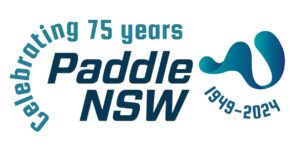New technologies are making long distance kayaking trips easier to plan and safer to execute. Many of these technologies are available on your mobile phone and are actively supported by State and Commonwealth governments. Other technologies continue to shrink in size and cost, while improving reliability. These technologies have been trialled and integrated into the operating procedures of a committed group of paddlers on week long journeys down the Murray, Murrumbidgee and Darling Rivers.
The PaddleSafe app is a great starting point for trips, bringing together decades of experience and insight from the paddling community. This history can be built upon by information and detail from Google and Google Earth. The internet is a warren of deep rabbit holes full of planning information, which hopefully will never be used, but helps to form a good plan. For our recent remote Darling River trip, we were able to build a map including every farm house and dirt airstrip along the river, including their names and precise locations. We also knew the flight times for rescue helicopters as well as their required clear landing space (17 meters for air ambulances – Westland AW139s).
One week out from a trip, our group communications shifts from emails to Whatsapp. The Whatsapp app is great for communicating across a group, which for us includes all members of trip and our support crew. Last minute questions and queries become known to all, while helping to build commitment, anticipation and excitement. By the time everyone meets at our first rendezvous point, the apps’ usefulness is almost over, but in so, it has been successful getting participants, boats and cars near the river.
At the riverbank before we launch, a final safety check is made across three apps, including WillyWeather (BOM), NSWFiresNearMe and NSWFloodsNearMe. Each of these apps could provide warnings of life threatening risks, which may not be known when we left home. This last minute check is an important cross reference against dangers and risks identified in the risk management plan.
On the river, two technologies dominate how the trip proceeds. At the heart of trip safety is the defibrillator. Recent research shows defibrillators have a high chance of saving lives if they can be placed onto the patient within 10 minutes of a cardiac arrest. We always carry the defibrillator on the back deck of the tail end Charlie boat, and the speed of the group is constantly moderated to ensure the maximum gap between the front and rear boats is never more than 10 minutes. Defibrillators are decreasing in size and in price, with new versions being pocket size. Given the risks of water-based recreation and the average age of recreational kayakers, carrying defibrillators, and having them at the centre of group safety, is really a no-brainer.
The second key technology is the handheld UHF radios. They are useful in maintaining group cohesion and safety. They enable scout boats to check on the river ahead and communicate safe paths back up the fleet. They allow the tail end charlie to communicate when the pace needs to be slackened as paddlers start to tire, and it adds to the group connectedness. With good radio discipline, we have found our radio batteries can maintain power across a five-day trip without recharging.
If disaster were to strike, communicating with the outside world becomes a priority. All our paddlers carry a printed cheat sheet of roles which need to be performed in an emergency. All our paddlers have downloaded the Emergency Plus 000 app which combines access to emergency services with a mapping feature. Embedded into the app is the What3words feature which provides longitude and latitude and the unique three word code for every three square meters across Australia. In a crisis, instead of trying to read out a long list of numbers for longitude and latitude, the app offers a simple three word code. I am writing this from ///shield.supply.obey – can anyone find me?
The What3words app is highly useful in trip planning. Rendezvous locations can pinpointed to the cool side of the café, and safer routes can be planned around logs and other obstacles with incredible accuracy. What3words extinguishes confusion across the group and the support team as to where you want them to be and where you want them to go.
We map mobile phone coverage we can expect down the river. Many new GPS devices have two-way satellite communications. I am still using my Gen2 SPOT tracker. It is comforting to know our support teams can follow us down the river with an updated position every 10 minutes. We carry a satellite phone as a last resort. Despite all the communication technologies, we are conscious of a three hour minimum wait time before a helicopter could appear, and have adjusted our crisis management plans for such a wait. This includes carrying a lightweight stretcher which doubles as my groundsheet.
Planning a safe trip brings together multiple forms of communications within a group, as well as emergency communications to reach the outside world. Responsible kayaking involves the highest level of group and individual preparedness, including the full use and integration of planning information, and having on hand the latest and best emergency response technologies, including the mobile phone, the new safety apps, the defibrillator, the UHF radio, the SPOT tracker and the satellite phone. A bit of an overkill says the traditionalist, but I say, better safe than sorry.
By Andy Singh and Roddy Kerr







